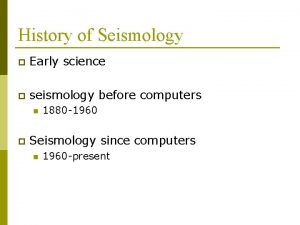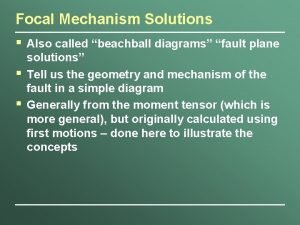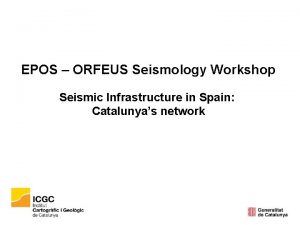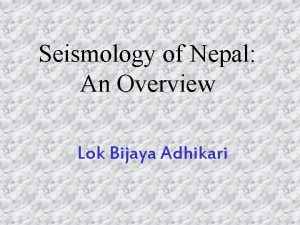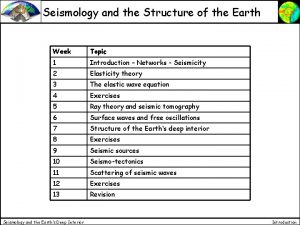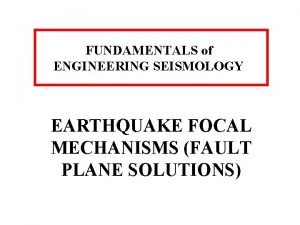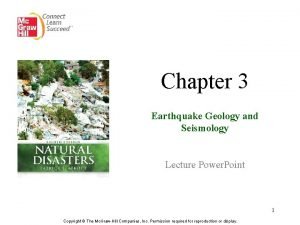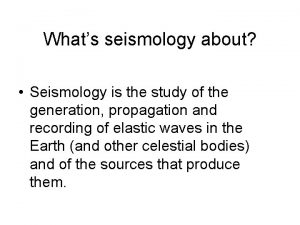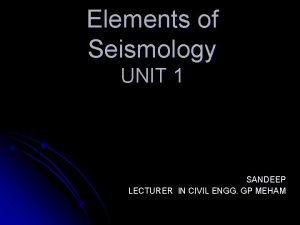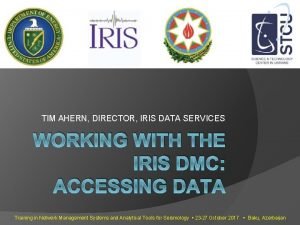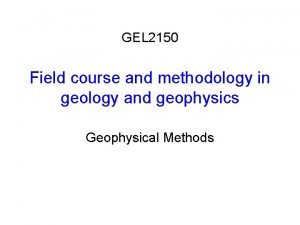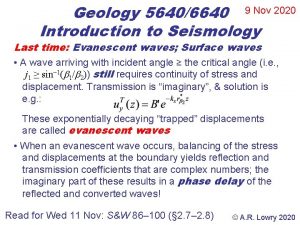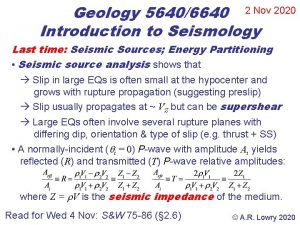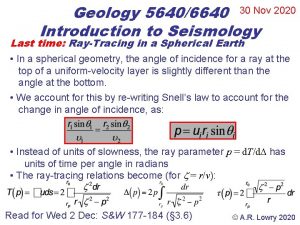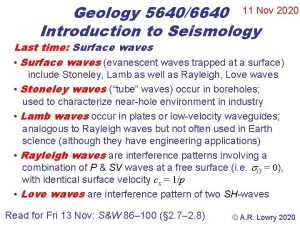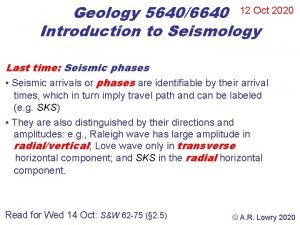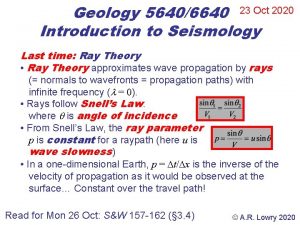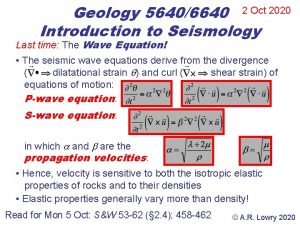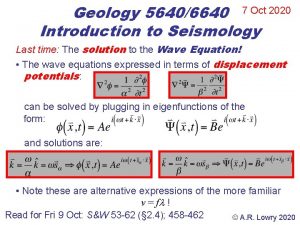Geology 56406640 18 Nov 2020 Introduction to Seismology










- Slides: 10

Geology 5640/6640 18 Nov 2020 Introduction to Seismology Last time: Love Waves • Love waves are a constructive interference between intersecting SH wavefronts with identical phase. • For a layer-over-halfspace, phase is identical for an apparent velocity cx in which: and hence 1 < cx < 2. • At shorter periods of seconds to a few tens of seconds, Love waves can have higher modes in addition to a fundamental mode seen at longer periods • Love wave velocity cx increases with period and with mode number Read for Fri 20 Nov: S&W 119 -157 (§ 3. 1– 3. 3) © A. R. Lowry 2020

Group & Phase Velocity: Surface waves sum all modes and all frequencies! Consider a sum of two waves with differing and k: u(x, t) = cos( 1 t – k 1 x) + cos( 2 t – k 2 x) Let: 1 = + 2 = – >> k 1 = k + k k 2 = k – k k >> k Then we can substitute/rewrite: u(x, t) = cos( t + t – kx) + cos( t – kx + kx) = 2 cos( t – kx) The envelope (or “beat”) has group velocity U = / k; Individual peaks move with phase velocity c = /k

(Phase velocity) (Group velocity)

Of course the real Earth is less simple than a layer-overhalfspace… Here the evanescent waves will be turning rays that produce S, SSS, SSSS, etc. phases. Kennett (2001) More S’s equal more bounces => shallower paths.

To measure Group Velocity: • Measure period as the time between successive peaks or troughs • Travel-time is the time at the time of arrival of the wave group minus the origin time • Divide the source-receiver distance by travel-time to get the group velocity

Or can get a bit more sophisticated by filtering the waveform (multiplying by a “windowing function” in the frequency domain) to isolate elements of the waveform that have a particular period, using a Fourier Transform. To get phase velocity, can transform to phase f and e. g. solve for c(f) from the difference in phase of the arrivals at two sites

Normal Modes Note: These slides borrow heavily from a presentation by Michel van Camp, Royal Observatory of Belgium… Gravimeters for seismological broadband monitoring: Earth’s free oscillations Michel Van Camp Royal Observatory of Belgium

What is a free oscillation? x Fundamental L 1 st Harmonic 2 nd Harmonic 3 rd Harmonic etc. Free oscillation = stationary wave Interference of two counter propagating waves (see e. g. http: //www 2. biglobe. ne. jp/~norimari/science/Java. Ed/e-wave 4. html)

Seismic normal modes (Duck from Théocrite, © J. -L. & P. Coudray) Few hours after the earthquake (0 S 20) Few minutes after the earthquake Constructive interferences free oscillations (or stationary waves) Periods < 54 min, amplitudes < 1 mm Observable months after great earthquakes (e. g. Sumatra, Dec 2004 took about 5 months to decay)

Traveling Surface Waves Rick Aster, Colorado State University http: //www. iris. edu/sumatra/
